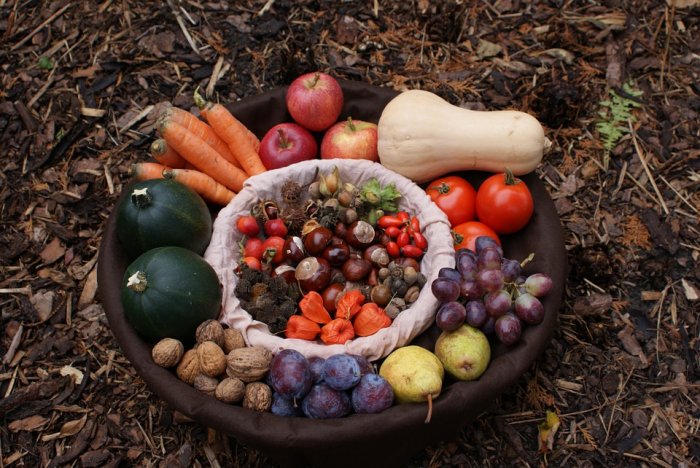Mabon Festival And The Autumn Equinox Celebrated By Pagans
Ellen Lloyd - AncientPages.com - When fall approaches, we remember darker and colder days are heading our way. Ancient people honored the changing of seasons through several festivals. One of them is known as the Mabon festival, which is celebrated between September 21 and 29.
It’s a time when the daylight and night are equal in length, and like most traditional autumnal equinox celebrations, the Mabon festival is associated with harvest.
Credit: Public Domain
Our ancestors considered the harvests a time to reap the rewards of their hard work, but it was also a period when you had to rest and prepare for the dark days and hard work to come.
The autumnal equinox is a time many Pagans associate with balance. “In old Poland, September was the most common month for marriage. Perhaps it was the beautiful shift of seasons when the day’s light is balanced with the night’s darkness. Perhaps it was the fall leaves changing from dewy green to amber hues. Maybe it was because the joining of two in love represents the most important balance of all.
The month of September hallmarked the end of the harvest season in Poland. Given the back-breaking work of gathering the year's yield, it is not surprising that the season culminated in great celebrations, marriage often being the largest festivity. This is a good time to honor Lado and Lada, the god and goddess of marriage, happy unions, and pleasure.” 1
In modern times, the Mabon festival is a Pagan ritual of thanksgiving for the fruits of the earth. Mabon can be celebrated in many ways. It’s common to build an altar and place fresh fruits on it. This can be a dining room table.
Pagans also ask for blessings, meditate and pray for peace and stability. Listening to relaxing music is also never wrong. According to Laurie Lovekraft, Los Angeles-based pagan leader, “Mabon is a time to reflect on the previous year, when we can celebrate our successes (likened to bringing in the harvest) and assess which crops, projects, or dreams didn’t come to fruition.” 2
The name Mabon was coined by Aidan Kelly around 1970 as a reference to Mabon ap Modron, a character from Welsh mythology.
“Before this, practitioners of Pagan religions simply called this seasonal holiday the Fall or Autumnal Equinox.
Kelly did find that the Eleusinian Mysteries fit the emotional role desired, but he did not want to throw a Greek name into the already established Celtic-Saxon scheme. Since he could not find a Saxon name, he resorted to neighboring Celtic sources. Kelly looked to the tale of Mabon ap Modron, the name meaning “son of the mother,” for what he saw as a thematic parallel to Kore, which meant “daughter of the mother.” He saw a spiritual link in the quintessential mother goddess having her child stolen. While Kelly drew spiritual inspiration for the holiday from the Eleusinian Mysteries, he used the name Mabon from the Celts for at least partial naming consistency in the sabbats.” 3
Credit: Public Domain
Briefly, the tale of Mabon is that of an infant child stolen away from his mother and imprisoned. His release becomes the object of the mythic hero Culhwch, who must seek out Mabon to help him hunt down a wild boar that was previously a king in order to win the hand of Olwen in marriage. As Kelly suggested, there are parallels to the Persephone myth: “Mabon can be seen as a character who epitomizes the pan-European concept of the infant in exile and return. […] This myth is indicative of the separation of the youthful god from his mother, the great goddess, and the resulting desolation of the land, which is only restored once the youthful god is reunited with his mother.”4
To many, the Mabon festival is a good way to stay connected with nature and reflect on past days and what will come in the future.
Updated on August 28, 2022
Written by Ellen Lloyd – AncientPages.com
Copyright © AncientPages.com All rights reserved. This material may not be published, broadcast, rewritten or redistributed in whole or part without the express written permission of AncientPages.com
Expand for references- Melanie Marquis, Kristoffer Hughes, Kerri Connor, Michael Furie and others - Llewellyn's 2017 Sabbats Almanac: Samhain 2016 to Mabon 2017
- Antonia Blumberg - Mabon 2014: Six Ways To Celebrate The Pagan Autumnal Equinox
- Diana Rajchel - Mabon: Rituals, Recipes & Lore for the Autumn Equinox
- Hughes, Kristoffer. The Book of Celtic Magic: Transformative Teachings from the Cauldron of Awen
More From Ancient Pages
-
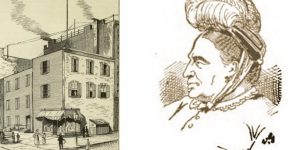 New York’s Queen Of Thieves Fredericka Mandelbaum Opened Marm’s Grand Street School For Criminals
Featured Stories | Oct 22, 2019
New York’s Queen Of Thieves Fredericka Mandelbaum Opened Marm’s Grand Street School For Criminals
Featured Stories | Oct 22, 2019 -
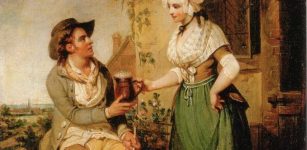 Ale Conner: Unpleasant And Dangerous Profession In Medieval England
Ancient History Facts | Oct 19, 2017
Ale Conner: Unpleasant And Dangerous Profession In Medieval England
Ancient History Facts | Oct 19, 2017 -
 Meet SPOT – Robot Dog Deployed To Guard The Ancient Ruins Of Pompeii
News | Apr 1, 2022
Meet SPOT – Robot Dog Deployed To Guard The Ancient Ruins Of Pompeii
News | Apr 1, 2022 -
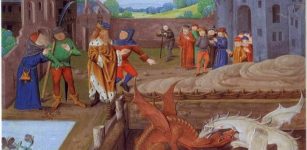 Magical Dinas Emrys – Battle Of The Dragons And Merlin’s Hidden Treasure
Featured Stories | May 21, 2019
Magical Dinas Emrys – Battle Of The Dragons And Merlin’s Hidden Treasure
Featured Stories | May 21, 2019 -
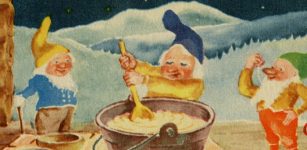 How Norwegians Expressed Resistance Against Nazi Occupation Using Christmas Cards
Featured Stories | Dec 21, 2023
How Norwegians Expressed Resistance Against Nazi Occupation Using Christmas Cards
Featured Stories | Dec 21, 2023 -
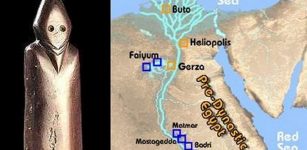 Mysterious Figurine Of Mythical Individual Dates Back To Egypt’s Naqada Culture 4400–3000 BC
Featured Stories | Sep 25, 2016
Mysterious Figurine Of Mythical Individual Dates Back To Egypt’s Naqada Culture 4400–3000 BC
Featured Stories | Sep 25, 2016 -
 Strange Ancient Measurements Of The Earth Revealed – Ancient Texts And Physical Evidence Examined
Featured Stories | Apr 11, 2018
Strange Ancient Measurements Of The Earth Revealed – Ancient Texts And Physical Evidence Examined
Featured Stories | Apr 11, 2018 -
 Homo Erectus Was Too Lazy And Went Extinct
Archaeology | Aug 14, 2018
Homo Erectus Was Too Lazy And Went Extinct
Archaeology | Aug 14, 2018 -
 Mystery Of Nebra Sky Disk: New Analysis Shows Surprising Results
Artifacts | Sep 4, 2020
Mystery Of Nebra Sky Disk: New Analysis Shows Surprising Results
Artifacts | Sep 4, 2020 -
 Intriguing Study Reveals Genes And Languages Aren’t Always Found Together – What Does This Say About Our Ancestors?
Archaeology | Nov 22, 2022
Intriguing Study Reveals Genes And Languages Aren’t Always Found Together – What Does This Say About Our Ancestors?
Archaeology | Nov 22, 2022 -
 On This Day In History: Battle Of Megiddo Between Thutmose III And King Of Kadesh’s Coalition – On Apr 16, 1457
News | Apr 16, 2016
On This Day In History: Battle Of Megiddo Between Thutmose III And King Of Kadesh’s Coalition – On Apr 16, 1457
News | Apr 16, 2016 -
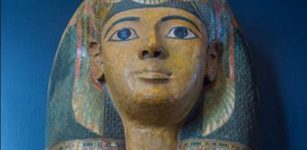 Ancient Egyptians Knowledge Of Psychiatry – Importance Of The Sorcerer And The Mysterious Zar Dance
Ancient History Facts | Apr 24, 2020
Ancient Egyptians Knowledge Of Psychiatry – Importance Of The Sorcerer And The Mysterious Zar Dance
Ancient History Facts | Apr 24, 2020 -
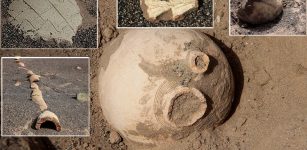 Ruins Of Ancient City Emerged From The Sand In Kerman Province, Iran
Archaeology | Apr 15, 2017
Ruins Of Ancient City Emerged From The Sand In Kerman Province, Iran
Archaeology | Apr 15, 2017 -
 Mysterious Unknown Caves And Tunnels Discovered Beneath The Olsztyn Castle
Archaeology | Jul 31, 2020
Mysterious Unknown Caves And Tunnels Discovered Beneath The Olsztyn Castle
Archaeology | Jul 31, 2020 -
 Mysterious And Unexplained Encounter With Unusual Tiny Beings In Italy – The Thing – Part 1
Featured Stories | Jan 15, 2022
Mysterious And Unexplained Encounter With Unusual Tiny Beings In Italy – The Thing – Part 1
Featured Stories | Jan 15, 2022 -
 Strange Tales Of Loughareema – The Vanishing Lake Where People Are Lost
Featured Stories | Jan 8, 2022
Strange Tales Of Loughareema – The Vanishing Lake Where People Are Lost
Featured Stories | Jan 8, 2022 -
 Treasure Hunters Encounter Something Unexplained In The Arizona Mountains
Featured Stories | Apr 7, 2022
Treasure Hunters Encounter Something Unexplained In The Arizona Mountains
Featured Stories | Apr 7, 2022 -
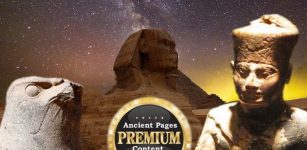 The Untold Story Of The Great Sphinx – One Of The Greatest – Part 1
Featured Stories | Aug 9, 2019
The Untold Story Of The Great Sphinx – One Of The Greatest – Part 1
Featured Stories | Aug 9, 2019 -
 Mysterious Disappareance Of Philip Christoph Königsmarck – Where Is The Swedish Count Buried?
Featured Stories | Feb 21, 2024
Mysterious Disappareance Of Philip Christoph Königsmarck – Where Is The Swedish Count Buried?
Featured Stories | Feb 21, 2024 -
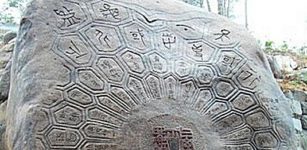 Giant Turtle-Shaped Rock Wangsan, Korea – One Of The Strongest Sources Of “ki”
Featured Stories | Jun 24, 2015
Giant Turtle-Shaped Rock Wangsan, Korea – One Of The Strongest Sources Of “ki”
Featured Stories | Jun 24, 2015

